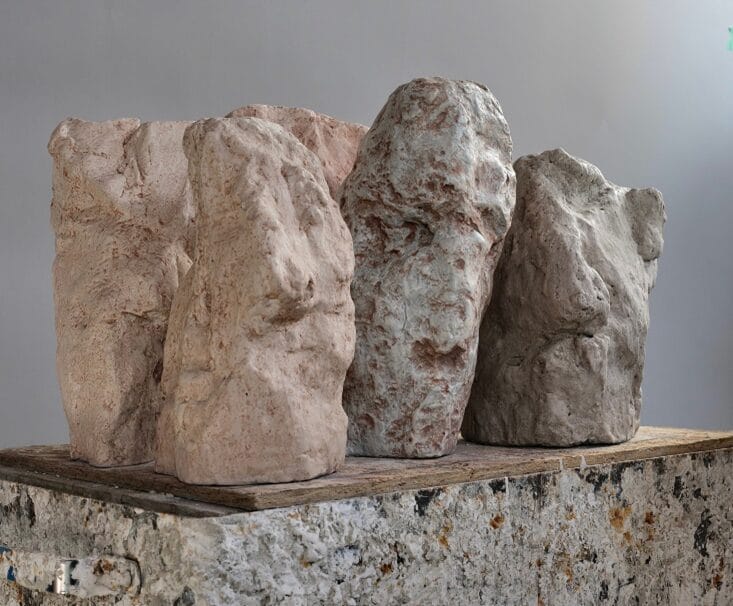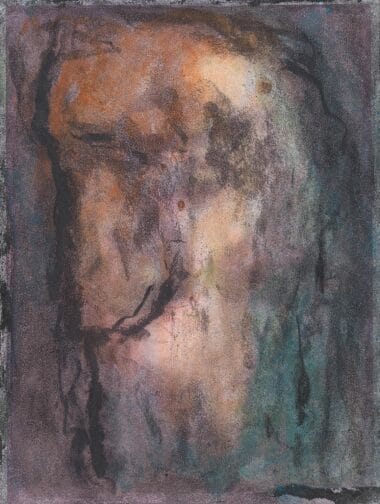Defying traditional definitions of portraiture, this new body of work from highly regarded Royal Academician William Tucker marks a new chapter in his long career of pushing artistic and academic boundaries.
1935) stands as one of Britain’s most important living sculptors. He studied history at Oxford University and drawing at The Ruskin School of Art, before attending the Central School under Leslie Thornton and John Warren Davies. In 1960, he transferred to St Martin’s School of Art where he
studied with Tony Caro. Here he gained recognition as part of the influential New Generation exhibition at the Whitechapel Art Gallery in 1965, alongside sculptors such as Philip King and David Annesley. He then went on to represent Britain at the Venice Biennale in 1972 and was given a one man show by the Arts Council at the Serpentine Gallery in 1973. In 1974, Tucker published his influential book The Language of Sculpture and
in 1975 he organized a major Arts Council exhibition at the Hayward Gallery, London, entitled The Condition of Sculpture. In 2001, two major retrospective exhibitions of his work were staged by Tate Liverpool, and the Yorkshire Sculpture Park. More recently, museum exhibitions of his sculpture include the Museo de Bellas Artes, Bilbao (2015) and the Kunstmuseum Winterthur, Switzerland (2016).

During his early career, Tucker’s work was fundamentally modernist and abstract, using industrial materials and striking colour. But after his move to New York in the 1980s he began to display an increasing interest in the human figure and modelling from plaster into bronze. Now in his late 80s, his latest work takes that exploration a stage further.
“I’ve got to a stage in my life,” he says, “where I’ve long ago left behind modernist ideas about figuration and abstraction. In the 60s, the idea of doing something so specific as to represent in sculpture a particular person would have been completely unthinkable. I wouldn’t even have considered it”.

This new series of ten portrait heads dates back to the end of Covid at a time when mask wearing was common, obscuring people’s identity. Inspired by the question of identity and the specificity of the subject in a portrait, Tucker embarked on new body of works to explore it in a physical sense. In an interview with Jon Wood, Tucker notes the influence of the Argentine writer, Jose Luis Borges, and that the subjects, though not immediately recognisable, include other literary figures such as WB Yeats and Maude Gonne.
In the exhibition, portraits of writers and fictional characters will feature alongside representations of people Tucker has known over his lifetime in what he terms ‘imaginative reconstructions’, coming together for this exhibition to face one another and the audience.
With regards to the process of making this body of work, Tucker reveals that the individual works were all orginally part of one enormous plaster of a horse – a subject he had previously explored. By cutting it up and making new work out of it, he is symbolically moving on from the past. He also alludes to assemblage and a certain anthropomorphism, sometimes referred to by scientists as pareidolia, which
involves a willingness to suspend disbelief to allow figurative forms to take shape: “I was really attracted to these pieces; I started to put them together and these heads started to appear”. Tucker describes this as “a vocabulary of chunks” which, once assembled, seemed to want to become someone, developing into a character. There is a precedent for this in his work when in the 1990s he made a head from a fragment lopped off an earlier sculpture, and then went on to draw and model more heads. But the new portraits, he says, are much more specific. Executed in plaster, and cast in bronze and resin they are accompanied by a stunning series of new works on paper – drawings in charcoal, ink and watercolour, inspired by the William Butler Yeats poem ‘A Bronze Head’.
In his discussion with Jon Wood, Tucker refers to one particular work which depicts Pierre Menard, a character from Borges’ short story from the Labyrinths collection: “I just love the idea of this completely futile waste of devotion and waste of time”. He reflects: “It seems to be pretty much what I’m doing. I don’t think of it as being futile, but I’m also putting, a great deal of thought and energy into inventing the head of somebody who never existed”.


